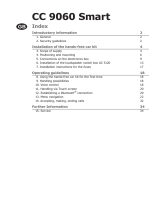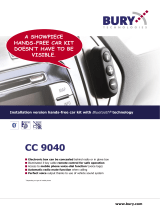
18
Operating guidelines
8. Handling possibilities
The system can be operated in two ways:
1. Operation using voice control
2. Handling via the touch screen
9. Voice control
The menu items of the HFCK can be selected using voice commands once this function has been acti-
vated. There are exceptions, however, when you still have to use the touchscreen. During an active
telephone call, for instance, you can’t use voice commands. You have to select any additional functions
using the touchscreen.
To start the voice control feature, briefly press the head symbol down on the main menu. If the
Magic Word function is activated, you can also start the voice control by stating the
„ACTIVATE VOICE DIAL“ command. In certain situations, however, with an incoming call and acti-
vated voice recognition for instance, the HFCK will start the voice control system automatically.
The HFCK signals that it is ready to receive a command by emitting an acoustic signal.
If you aren’t sure of the right command to use, then simply state „HELP / WHAT CAN I SAY“.
The HFCK will then read out the commands available for the particular menu in which you currently
find yourself. If the HFCK fails to understand one of your commands, or the particular option isn’t avail-
able, the help function will start automatically and list the possible commands.
Please remember that certain commands are only available if a telephone is connected with the HFCK.
When entering voice commands, please ensure you speak naturally, clearly and at a regular speed.
Note:
With the use of the voice control it is recommended to turn down the volume of compo- X
nents which are independent of the audio system (e.g. a navigation system) or to switch
off the broadcast of traffic jam warnings in order to avoid unintended voice entries.
Touch screen
Voice dial
commands
The „VOICE COMMANDS“ are high-
lighted in the further explanatory notes.






















